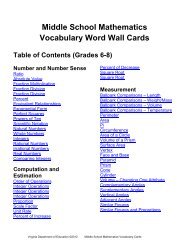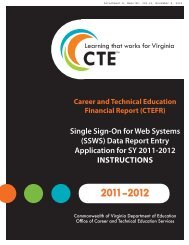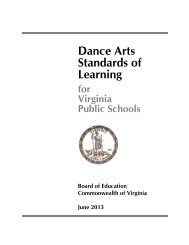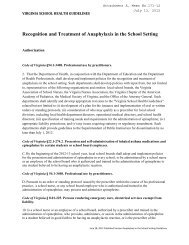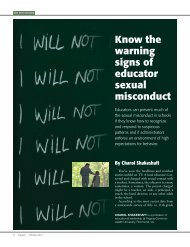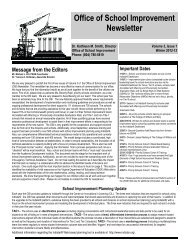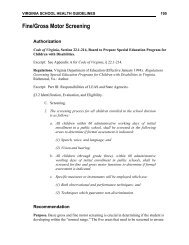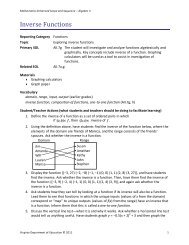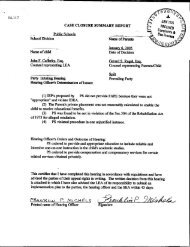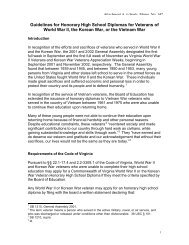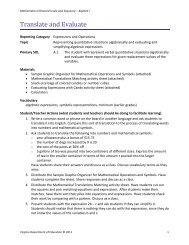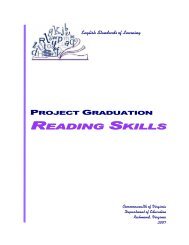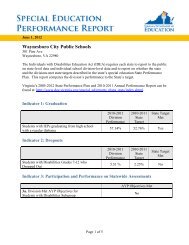What Makes Something Alive - Virginia Department of Education
What Makes Something Alive - Virginia Department of Education
What Makes Something Alive - Virginia Department of Education
Create successful ePaper yourself
Turn your PDF publications into a flip-book with our unique Google optimized e-Paper software.
Topic 4: Session 4.4 – Life Cycle Models<br />
Session Supplies:<br />
• Materials for students to make models - plates, different kinds <strong>of</strong> macaroni noodles, beans,<br />
cotton, crayons, clay, construction paper, etc.<br />
• Scissors<br />
• Glue<br />
Session <strong>Virginia</strong> SOL<br />
2.1 i, j, k, l<br />
2.4 a<br />
Science English Mathematics History & Social Science<br />
2.1 c, d, e<br />
2.2 a, b, c, e<br />
2.3 a, b, c<br />
Session 4.4 – Life Cycle Models<br />
Teacher Questions & Notes<br />
Procedures<br />
Topic 4, Session 4<br />
Prior to this session, the teacher will need to gather materials for<br />
students to use when creating their life-cycle models. A list <strong>of</strong><br />
suggested supplies can be found in the materials section, but you may<br />
use any materials you have available. This session may need to be<br />
broken into two sessions depending on time available.<br />
1. Scientists record information in a variety <strong>of</strong> ways. Students will<br />
demonstrate what they have learned by constructing a model <strong>of</strong><br />
the life cycle <strong>of</strong> a butterfly, a moth, or a frog.<br />
a. Show students the available supplies. If technology is<br />
available, you may give students the option to create a<br />
PowerPoint, claymation, etc.<br />
b. On the board, list three criteria for their projects:<br />
i. Your model must show the four life-cycle stages.<br />
ii. Your model must be labeled.<br />
iii. Your model must include a fact sheet that has at least two<br />
additional facts about the butterfly, the moth, or the frog.<br />
2. Have students construct their models.<br />
3. Have students present their models to the class.<br />
4. Using the information learned during the life-cycle presentations,<br />
create a class Venn diagram comparing the butterfly, the moth,<br />
and the frog life cycles. Also include at least one other animal<br />
(e.g., dog, grasshopper, squirrel). Included on the Venn diagram<br />
can be information about their life cycle, habitat, physical<br />
147<br />
<strong>Virginia</strong> Animals and their Habitats<br />
Topic 4



